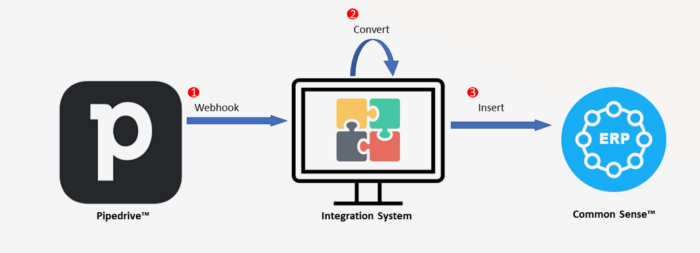Generally, when companies undertake a digital transformation, they are aiming to improve the efficiency of their business processes and also the accuracy and visibility of their critical business data. Therefore, businesses often make use of two systems to ensure that their business processes run efficiently— a Client Relationship Management (CRM) system and an Enterprise Resource Planning (ERP) system.
Pipedrive™ is a Software as a Service (SaaS) CRM solution that helps salespeople manage their relationships with their customers and effectively schedule, complete, and track activities through visual pipelines. Common Sense™ is a complete ERP solution developed by SIA Innovations, that is specifically designed for SME customers in the following industries: manufacturing, distribution, transportation/logistics, and firms involved in project management (i.e. construction, engineering).
Is it important to integrate your CRM with your ERP?
What are the benefits of integrating Pipedrive™ with Common Sense™?
1- Improve efficiency
2- Avoid duplication
2- Gain end-to-end visibility of sales process
How did we integrate Pipedrive™ with Common Sense™?
System Design
The key success factor of a good integration is a well-prepared design of the system. To accomplish this step, we started by looking into the current or as-is sales managing process, locating the activities to be automated, and creating a to-be process. Another crucial step was to create an Entity Map, which helped us understand the relationship between the properties in Pipedrive™ and those in Common Sense™. Finally, we designed the system architecture using a C4 model. This helped to align everyone’s understanding of the system architecture in its different levels.
Technical Aspect


1- Webhook generation
2- Convert Pipedrive™ data
3- Insert data to Common Sense™




